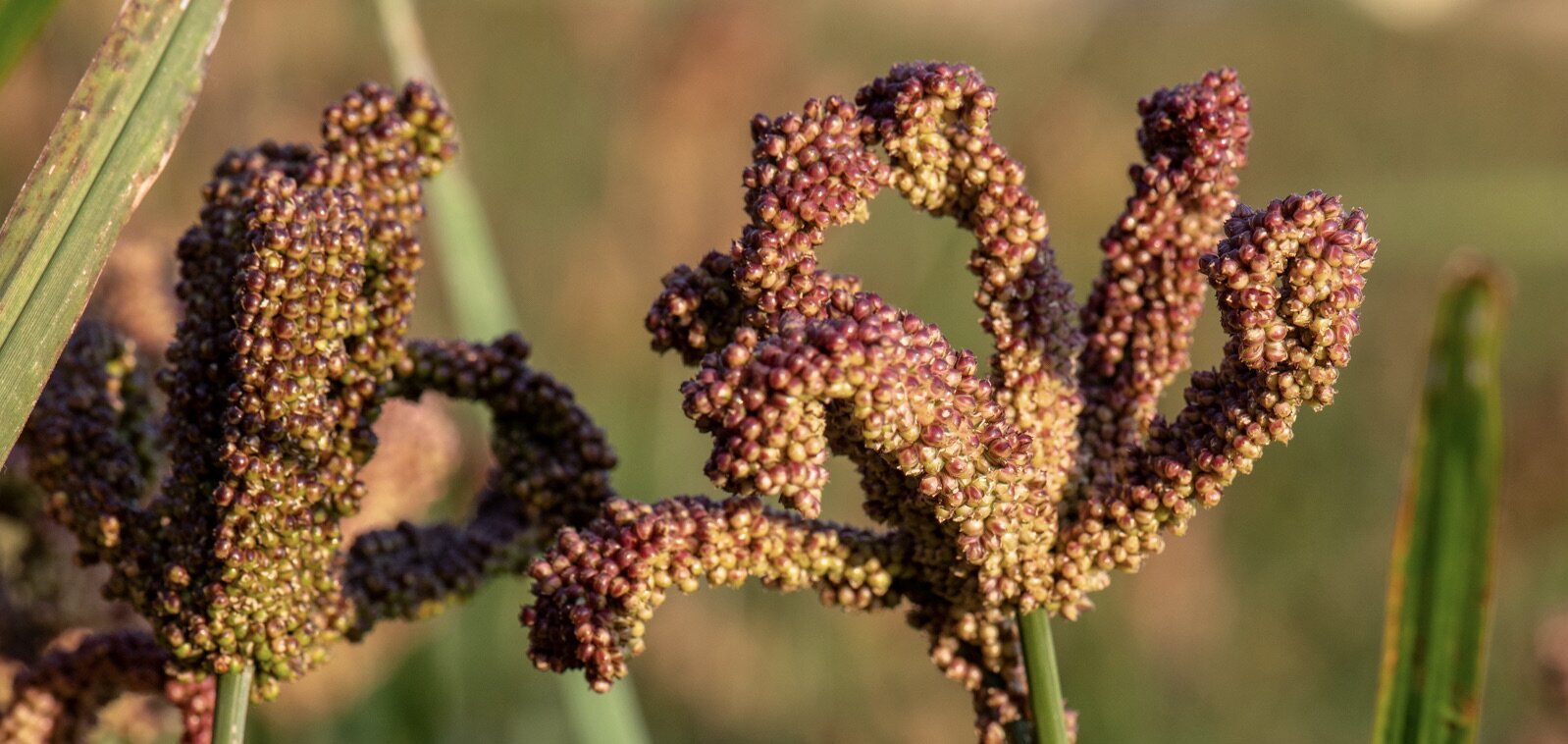Millets
The Crop Trust works to conserve two types of millets: Finger Millets and Pearl Millets.
FINGER MILLET
Finger millet is a hardy crop that is well-adapted to arid highland areas in Africa and Asia. Its small and tough grain is easily stored and is a reliable food source in times of drought and crop failure.
Finger millet is grown across the savannah and highlands of Eastern and Southern Africa, with the highest annual production on the continent in Uganda. The crop is now grown on a larger scale in India, from the dry southern states up to an altitude of 2,300m in the Himalayas.
By providing essential amino acids, finger millet is an important addition to diets relying mostly on starchy crops such as cassava, maize and plantain. The grains are ground and used in baking flatbread, preparing porridges and also for brewing beer. The straw is used as animal fodder.
As with the other millets, finger millet is a crop that holds great potential for further breeding. Most finger millet found in farmers' fields are landraces (farmer-selected "varieties"), many with unique traits and properties that could be useful in other regions. Some of the challenges facing breeders include finding resistance to common finger millet diseases such as blast, tar spot and leaf blight, and combining such resistance with high yield potential. According to the CGIAR, finger millet's grain yields could be competitive with those of rice and other "green revolution" cereals.
PEARL MILLET
Pearl millet is the most widely grown of the millets. There are few cereals able to produce such stable yields in marginal, hot and dry agricultural conditions.
Pearl millet is a staple cereal in the Sahel, Sudan, northern Namibia and Angola, and in the state of Rajastan in India. This reflects the crop's main cultivation areas: across Africa from Mauritania to Sudan and south to South Africa, and across the Indian central plateau. Millions of the poorest farmers of the world depend on this crop.
Pearl millet is eaten in the form of breads, porridges and in boiled or steamed foods. Millet beer is often called a staple of religious and social life in Africa. As a result of its high protein content, and competitive yields on marginal lands, the grain is gaining popularity as feed for poultry and other livestock.
The adaptations of pearl millet to withstand extreme heat and drought are truly extraordinary. When there is a little moisture available, the seedling germinates and rapidly extends its roots far down into the soil to where water is available. Meanwhile, the surface temperatures can climb above 50°C. In drought, the plant can stay dormant for long dry spells, bursting into growth once the rain returns.
The ability of pearl millet to grow in dry and marginal environments clearly makes it a crop with an important role in the future. As the market the crop serves is marginal, pearl millet may be considered an "orphan crop," as it has historically received little attention from commercial breeders.

